The best Android phones 2024: top Google-powered phones for every budget
We've tested and ranked the best Android phones in 2024
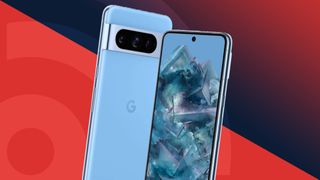
1. The list in brief
2. Best overall
3. Best value
4. Best budget
5. Best battery life
6. Best alternative flagship
7. Best foldable
8. FAQs
9. How we test
With so much choice in the market, selecting the one of best Android phones is far from easy. Sure, you could pick a Samsung Galaxy but you may not get on well with the software. Pixel phones are great but you might like a different future set. And OnePlus arguably doesn't always deliver the flagship-killer phones it used to.
But we've tested all the phones you'll find below, from defined battery testing and benchmarks, to how these phones feel in real-world, everyday use. So you can rest assured that any phone on this list is well worth your consideration.
All of these Android phones are fun to use yet powerful at the same time. In this guide, we've included something for everyone, from budget-friendly handsets to popular, kitted-out flagships. However, if you're after the former, you may be better off sifting through the Google-powered in our best cheap phones guide. So read on for the best Android phones you can buy today.
Quick List
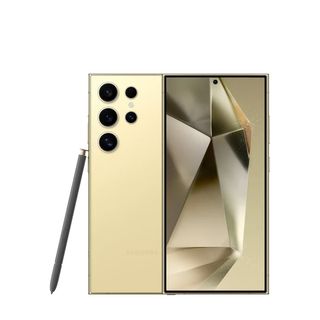
A titanium design, new 50MP 5x telephoto camera, a flat screen and a whole lot of AI, makes the Samsung Galaxy S24 Ultra the very best Android phone money can buy right now.
Read more below
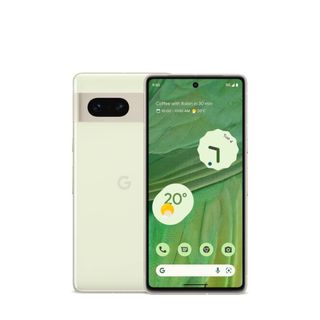
Everything the Pixel 7 offers – from its distinct design to its creative and capable camera and intelligent user experience – makes it a great value-for-money flagship buy.
Read more below
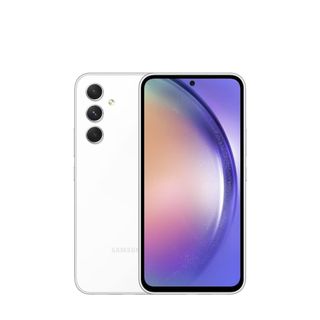
The Galaxy A54 is the cornerstone of Samsung's current A-series mid-rangers and packs in some nice upgrades over its predecessor, even if its battery life claims fall a little short.
Read more below

Faster, flatter and slicker the Google Pixel 8 Pro is now a fantastic AI-centric smartphone with a stellar battery life, and still has great cameras.
Read more below
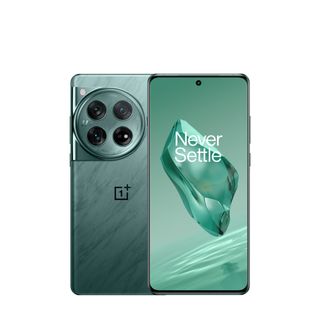
The OnePlus 12 offers an alternative design and philosophy to other flagship phones, eschwing generative AI features for fast performance and great battery life.
Read more below
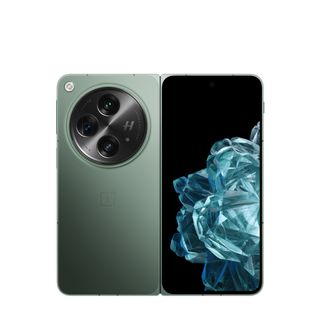
The OnePlus Open boasts a superior design, display, and set of cameras to its main competitors from Google and Samsung, making it the best foldable phone right now.
Read more below
The best Android phone in 2024
Why you can trust TechRadar
Below, you'll find full write-ups for each of the best Android phones in our list. We've tested each model extensively, so you can be sure that our recommendations can be trusted.
The best overall Android phone
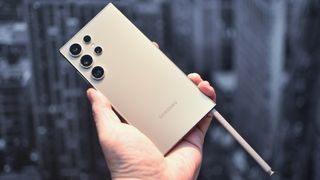
1. Samsung Galaxy S24 Ultra
Our expert review:
Specifications
Reasons to buy
Reasons to avoid
At first glance, the Samsung Galaxy S24 Ultra looks a whole lot like its predecessor, which previously topped this list. But look more closely and you'll notice some subtle differences. The 6.8-inch display is now flat and the phone's chassis is made of tough but light titanium making for a phone that feels a little lighter but a lot nicer in one's hands.
Below the hood, you'll find a powerful Qualcomm Snapdragon 8 Gen 3 chip tuned for the Galaxy S24 range, and that chip features in all S24 Ultra models, not just those in the US. The chip's power doesn't just yield blazing-fast gaming, it also powers a host of new generative AI features, like Generative Edit that lets people fully recompose a photo after it's bene take with zero need for Photoshop skills. There are also live translation features and other smart tools.
The rear camera array may still be headlined by a 200-megapixel sensor but the big change comes in the swapping of the 10MP 10x telephoto camera for a 50MP 5x zoom periscope camera. This means more detail at the expense of pure optical zoom. But with the ability to crop into 10x, there's not really a compromise here, and the new telephoto camera makes for an overall more flexible phone photography package.
Of course, the Galaxy S24 Ultra ins't cheap but as a do-everythign phone with impressive specs, capabilities, smart tools and more, it's simply the best Android phone you can buy today.
Read our full Samsung Galaxy S24 Ultra review
The best value Android phone
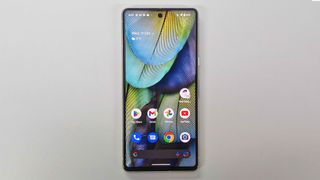
Specifications
Reasons to buy
Reasons to avoid
While you might expect the Pixel 7a to be our pick for the best value Android phone, Google has given the Pixel 7 such good discounts throughout the past year that it's now worth paying a little bit more for. Even though the Pixel 6a is still on sale at a great low price, for better durability, wireless charging, and much better photography, the Pixel 7 is worth the money.
The Pixel 7 may look like its predecessor and successor but with a suite of colors to choose from you're going to get something that feels fresh even if it's a generation behind the Pixel 8. The lemongrass color option is a particular highlight. Water and dust resistance has been given a boost to IP68. And while the metal camera bar can be divisive, it still a bit of stand-out design from Google and will look subtly different depending on the color option you go for.
With the Pixel 7 you're getting the same 50MP main camera as the Pixel 7 Pro, as well as a similar 12MP ultra-wide. You also get the same 10.8MP punch-hole selfie snapper, plus 4K video recording up to 60fps and support for 10-bit HDR video capture for better colors, brightness and contrast. While the hardware is interesting, the Pixel camera experience is really more about the processing and software, which is here supported by Google's competent Tensor G2 chip.
The Pixel 7 has a Full HD+ resolution and 20:9 aspect ratio, and it runs at up to 1000 nits in normal use, and can push to 1400 nits at its peak (25% brighter than that of the Pixel 6's display) for better visibility in bright surroundings. We had no trouble getting the phone to last all day, and ended most days at around 15% battery.
Read our full Google Pixel 7 review
The best budget Android phone
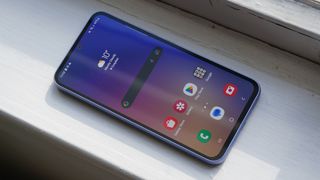
Specifications
Reasons to buy
Reasons to avoid
The A54 is essentially a 'lite' version of the Standard Galaxy S23, bringing lots of 'S-range' features to a lower price point. It's not the absolute cheapest phone Samsung makes by some distance, but it is unquestionably worth considering if you're on a budget.
The phone measures 158.2 × 76.7 × 8.2mm and weighs 202g, so we’d call it medium-sized. It’s not so big that it’s uncomfortable to use, so long as your mitts aren’t massive. It's also undeniably attractive; adopting the floating camera design language found on the S23 series. Other colorways are similarly pretty.
The Samsung Galaxy A54 also boasts one of the best-looking screens you’ll see on a phone for this price. It’s a vibrant, colorful 6.4-inch Super AMOLED panel, with a FHD+ resolution, 120Hz refresh rate and 1,000 nits max brightness, marking some nice upgrades over its predecessor.
The main camera is an optically stabilized 50MP f/1.8 sensor, which is joined by a 12MP ultra-wide and a 5MP f/2.4 macro sensor. The snappers take photos that are bright and colorful, which makes shots of wildlife, food, landscapes or people 'pop'. There’s good dynamic range for a phone at this price and pictures are sharp too, as long as you take them on the main camera.
The Galaxy A54 may lap same-price rivals in the camera and display departments, but it falls behind on performance. The chip here is the Exynos 1380, which is a home-brewed piece of mid-range kit from Samsung – and, while capable, doesn't measured up to similarly-priced rivals.
The 5,000mAh battery is on the big side, though we see lots of affordable phones pack this kind of power. That bright screen and 5G require a lot of juice, and we found that the phone comfortably lasted a day between charges, but no more.
So, on the whole, the Samsung Galaxy A54 gives you some surprisingly top-end specs for its price in some departments, but in others it's weaker than its rivals.
Read our full Samsung Galaxy A54 review
The best Android phone for battery life
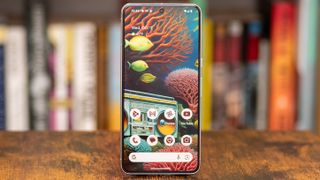
Specifications
Reasons to buy
Reasons to avoid
In truth, when it comes to selecting the Android phone with the best battery life, there's no outright winner, but the Pixel 8 Pro is a truly excellent phone whose battery life is a key part of its offering.
Put simply, this is Google’s most ambitious Pixel yet, with some serious camera upgrades that will satisfy even pro photogs, and a Tensor G3 chipset custom built to run Google’s machine learning features. In fact, Google is so confident in this phone’s performance that it's promising an unprecedented seven years of major updates, which is longer than any other phone maker is currently supporting its phones.
In almost every way, the Pixel 8 Pro's display beats that of the iPhone 15 Pro Max, and even some photos look better when shot with Google's latest flagship. Only the Pixel 8 Pro has Magic Editor, too, which combines generative AI with Google's Magic Eraser to fix and change images with a little too much ease.
But more on that battery: the Pixel 8 Pro has no trouble lasting through a full day of heavy use. That should come as no surprise, since it has a larger battery than either the Samsung Galaxy S23 Plus or the Apple iPhone 15 Pro Max. Google really packed in the biggest cell possible into this phone, and you’ll need to buy a gaming phone to find bigger. That aforementioned screen is bright, but Google keeps it dialed down to a healthy brightness that won’t strain your eyes or drain the battery too much. There are plenty of baked-in power management features, as well.
You can choose between Standard battery saver or Extreme battery saver modes, the latter of which limits more apps and background processes. There’s also an enigmatic adaptive battery feature that’s turned on by default. All the better, because that battery really lasts.
Read our full Google Pixel 8 Pro review
The best alternative Android flagship phone
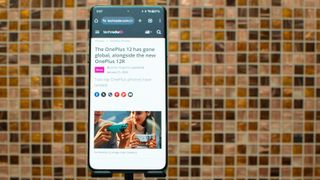
Specifications
Reasons to buy
Reasons to avoid
The OnePlus 12 makes for a great alternative to the new AI-centric smartphones. While far from dumb, the new flagship phone from OnePlus focuses on speed, performance and battery life over a host of generative AI tools; much like its predecessor did.
A smart design is complemented by a rather interesting camera suite that delivers some great photos, providing you're willing to put in a little bit of effort in adapting to the camera quirks. And the Qualcomm Snapdragon 8 Gen 3 chipset at the phone's heart means it'll easily blast though games and multitasking.
And what's extra refreshing here is that the OnePlus 12 is prices competitively against entry-levle models of the Pixel 8 and Galaxy S24 series, but offers more specs for the money. That's means we're getting a whiff of the OnePlus of the past, which offered flagship-challenging phones for great prices.
As an overall smartphone package, the OnePlus 12 offers fast performance, a great AMOLED display with a 120Hz refresh rate, and very fast charging; as is expected from OnePlus. Sure, it's arguably a little old hat in terms of not offering new AI features, but for some that'll be a boon with less to get in the way of an everyday smartphone experience.
In short, the OnePlus 12 is a great phone and a worthy alternative flagship Android smartphone.
Read our full OnePlus 12 review
The best foldable Android phone
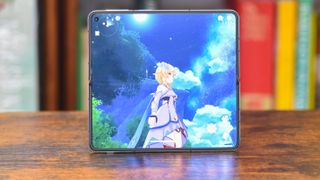
Specifications
Reasons to buy
Reasons to avoid
The OnePlus Open is the newest phone on this list, and we consider it to be among the best foldable phones (if not the best foldable phone) money can buy right now.
Sure, the Samsung Galaxy Z Fold 5 offers myriad more special features, and the Google Pixel Fold utilizes the power of Android in a way that only Google-made phones can, but in almost every other department, the OnePlus Open is the best there is.
For us, this the first tablet foldable phone that simply feels right. While the Pixel Fold is too short and the Galaxy Z Fold 5 too slim width-wise, the Open, however, hits the design sweet spot, and it's the most important improvement OnePlus could have made to the foldable form factor. If you’re paying twice as much for a phone, you shouldn’t feel like it’s the wrong size half the time.
Compared to other foldable tablets, the OnePlus Open is just better. It's a better size when it's closed. It’s easier to open. In every way, the Open is a better experience, but OnePlus didn’t stop at the folding hinge. It also added something that no other foldable phone maker has dared: really good cameras.
On every other foldable phone, the size limitations of the fold-in-half design have resulted in cameras that range from inferior to downright awful. The OnePlus Open has the best cameras of the bunch, and comes close to being as good as the best flat camera phones, closer than any foldable we've used so far.
Read our full OnePlus Open review
FAQs
What is the best Android phone?
Right now, the best Android phone outright is the Samsung Galaxy S24 Ultra, but if you're looking for something a little less expensive, then the Google Pixel 8 Pro and OnePlus 12 are great flagship alternatives.
Which Android phone is the best value for money?
Right now, the Android phone that offers the best value for money is the Google Pixel 7, although OnePlus 12 is a strong choice if you're keen on the benefits of a Pro-level phone but don't want to spend big on the Samsung Galaxy S24 Ultra.
Which Android phone brand is the best?
No single Android phone brand offers the definitive 'perfect smartphone', so instead we try and filter out what different users are looking for and make recommendations based on the greatest strengths of a particular brand's devices.
Samsung's flagships tend to be among the very best Android phones out there; namely for their rich feature set, capable software, versatile cameras and great long-term software support, but there are a wealth of other devices from other phone makers worth considering too.
Brands including OnePlus, Xiaomi, Oppo, Google and others, all have something to offer to the right user, and we aim to show a diverse range of handsets, including those you might not have heard of or considered.
Is Android or iOS better?
Choosing between Android and iOS is a matter of personal preference. With Android you get a much wider selection of phones and brands, so it can be easier to find a handset with the features (and at a price) that you're happy with. With iOS, you get a more consistent experience across phones, and iPhones work well with Apple's other products and services.
How we test
We've reviewed every phone on this list, so for each, we've passed our expert judgement on them after extensive testing. This testing saw us use each phone as our main handset for at least a week, and often longer.
In the process, we would explore various use cases, including calls, texts, social media, video streaming, gaming, taking photos and more, with some heavy use days and other lighter ones.
In short, we use our Android phones just like you would – but we make sure to test every key feature, as well as running benchmark tests, checking how long they take to charge, and more.
From that, we've then ranked each handset, factoring in price, value, and how they compare to one another, with a particular focus on their screens, designs, battery life, performance, and cameras.
- You've reached the end of the page. Jump back up to the top ^
Get daily insight, inspiration and deals in your inbox
Get the hottest deals available in your inbox plus news, reviews, opinion, analysis and more from the TechRadar team.

Phil Berne is a preeminent voice in consumer electronics reviews, having reviewed his first device (the Sony D-EJ01 Discman) more than 20 years ago for eTown.com. He has been writing about phones and mobile technology, since before the iPhone, for a variety of sites including PCMag, infoSync, PhoneScoop, and Slashgear. He holds an M.A. in Cultural Theory from Carnegie Mellon University.
Phil was the internal reviewer for Samsung Mobile, writing opinions and review predictions about top secret new devices months before launch. He left in 2017. He worked at an Apple Store near Boston, MA, at the height of iPod popularity. He has been a High School English teacher at Title I schools, and is a certified Lifeguard. His passion is smartphones and wearables, and he is sure that the next big thing will be phones we wear on our faces.
- Axel MetzSenior Staff Writer
